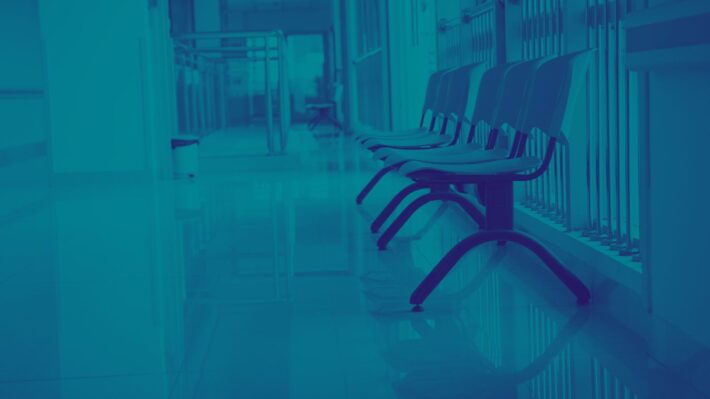What is Wave Scheduling and Why Should I Use It?

Scheduling has a big impact on satisfaction and performance. Learn about wave scheduling and why 3 of the top 5 Radiology brands in the country use it.
Wave scheduling is defined as an appointment scheduling method that involves assigning patient appointments at the same time. With a wave schedule, two or more patients arrive at the beginning of the hour and others at the bottom of the hour.
For instance, if you schedule a patient for an 8:00 AM appointment, but they show up at 7:55 AM, the doctor may still see the patient. However, if the same patient arrives at 8:15 AM, the doctor can see them in a different time slot. It allows you to constantly move patients through the schedule, regardless of early or late arrivals.
In fact, wave scheduling is incorporated into the day-to-day operations for 3 out of the 5 top Radiology brands in the country.
Why is it important to have an optimized patient schedule?
One of the biggest benefits of a well-thought-out schedule is the fact that your outpatient clinic will run more smoothly. When done right, you can see your patients on time and have appropriately spaced out your appointments so that everything can function smoothly.
When you see your patients promptly, they are more likely to be satisfied with their treatment and return for future appointments. Problems arise when patients are late or miss their appointments. It throws off the whole day and can affect your bottom line. While there are many ways to create a schedule, wave scheduling is one of the best methods to use.
Other types of patient scheduling methods
How you run your patient schedule will largely depend on your clinic size and specific needs. If you get a lot of patient no-shows, you might need a schedule that accommodates this. In other instances, you might experience a lot of emergencies or patients with urgent needs.
There are a variety of other scheduling methods, including
Time-slot scheduling
This method assigns patients to specific times during the day or week. This usually happens after the patient selects an ideal time from available slots. It’s the most common type of scheduling used in hospitals and clinics.
Open booking
Open booking allows patients to arrive over a specific time range. Usually, the patient doesn’t have a particular time for their appointment. This method allows the doctor to see as many patients as possible or attend to emergency cases at a given time.
Double scheduling
This technique books multiple patients for the same time slot. Double scheduling works particularly well if both patients are coming in for different things and if you have the staff to support it. Then, if one patient is a no-show, you still have someone else in at that same time.
Cluster scheduling
Cluster scheduling involves allocating patients with similar conditions or health problems to consecutive appointments on a given day. This system ensures patients with similar needs are seen together and can receive care from a single provider. This approach is often used in busy clinics because it reduces wait times.
Stream scheduling
Also known as time-specific scheduling, stream scheduling allows clinicians to assign patients to specific days and times. It also enables clinicians to use clinic resources and efficiently accommodate patient needs. Time-specific scheduling is essential for patients who need care on specific days or hours.
Benefits of adopting a wave schedule
1. Increases staff productivity
Wave scheduling provides your staff with a predictable work schedule. This allows them to plan their days and weeks more accurately, leading to increased efficiency and accuracy when carrying out their duties.
It can also reduce stress in the workplace. For instance, grouping employees according to their roles makes it easier for them to manage their time and focus on their tasks.
2. Prevents long wait times
Wave scheduling can help optimize patient flow by grouping patients together so that specialists or physicians can see them as quickly as possible. This helps prevent long waiting times and reduces patient and physician frustration. It also ensures that patients receive appropriate care on time.
3. Minimizes overcrowding
Wave scheduling allows you to use your waiting area more efficiently by assigning patients to specific waves. This creates flexible treatment plans that consider the needs of all patients in the waiting room, ensuring each patient receives the best possible care. In turn, this can prevent overcrowding and long wait times, which can negatively impact patients’ health and wellbeing.
4. Prioritizing emergency care
Wave scheduling lets you give higher priority to patients with urgent needs regardless of the number of patients waiting. By funneling patients into waves of care, you can ensure that you have enough staff and resources to handle the increased demand for medical services during peak periods.
Improve your on-time performance
There are many benefits to wave scheduling, which can significantly impact your outpatient clinic’s performance. You can ensure that your staff treats patients in a specific order, resulting in more efficient use of resources, leading to improved patient care.
CCD Health specializes in the patient experience and an optimized schedule. By partnering with us, we can significantly decrease patient no-shows with a scheduling pattern—such as waves—that works best for your specific needs.
Contact us to learn more about how our patient care specialists can help.



